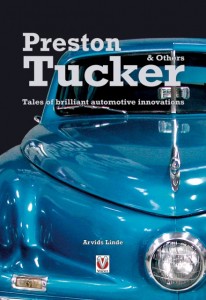Decoding Dylan
Making Sense of the Songs That Changed Modern Culture
As Jim Curtis admits in the last chapter, there is “very little that can be said about Dylan without sooner or later mentioning a paradox.” We would go further in suggesting that when dealing with Bob Dylan there are paradoxes within paradoxes. Thus any attempt to decode Dylan shows both courage and hubris, but these attributes do not necessarily guarantee satisfying results. A critic should be careful not to cross the line to suggest that his decoding is the decoding, that his explication of a song is the explication—especially when considering the inscrutability of Dylan. If Curtis does not cross this line, he at times comes close.
A fair question: Has Curtis succeeded in decoding Dylan or has he but added another voice to the vast cauldron of criticism, explication, and appreciation that has come before? Also, the reader should be advised that Curtis is breaking the code of no more than a dozen songs that Dylan recorded in the 1960s. Among these there are only three—four?—songs that Curtis explores in penetrating depth. We assume that these are the songs that “changed modern culture.”
Such focus is fine, but it somehow lowers the expectations that the title of his book suggests—Dylan did not stop recording in 1965; he has kept on recording for another fifty years. There is, also, unfortunately, a large problem that bedevils Curtis’ endeavor: Apparently he was unable to secure permission to publish the lyrics. This causes many an interruption for the reader who has to make the effort to Google the song under discussion, and, sometimes, to suss out just which lines Curtis is referring to. On occasion he seems to make up for this by sneaking in his prose a well-known phrase from a Dylan lyric: “. . . in the summer of 1963, he was no longer scrounging his next meal. . .” (“Like a Rolling Stone”). Writing about Pete Seeger’s reaction to Dylan at Newport, Curtis says that “something was happening there, but he did not know what it was” (“Ballad of a Thin Man”). We find this coy. We also find Curtis is too often dogmatic. When discussing how a codebreaker has to identify recurring patterns, for one example, he writes that “no pattern occurs more frequently, or has greater emotional resonance in America, than the relationship between democracy and elitism.” Race? Polarizing politics? The limits of social welfare? And what should we make of his assertion that if you were to “take away [Duke] Ellington’s band and give him a guitar instead of a piano” you would “have somebody very much like Dylan”? On the other hand, Curtis has his facts straight—we find only one error. He states that the song “I’ll Keep It With Mine” is found on the album Blonde On Blonde. Although this song was recorded during the making of the album, it is an outtake.
All of this doesn’t preclude us from liking the book. Much of what Curtis pulls together, many of the parallels he explores, and a good deal of insights he has garnered from his fifty years of thinking about Dylan (Curtis was born in 1940), do not go unappreciated. Bringing to Dylan’s table T.S. Eliot, Ernest Tubb, Bruce Springsteen, Dante Alighieri, Buddy Holly, Woody Allen, William Shakespeare, Pablo Picasso, Hank Williams, Barbara Streisand, Charles Baudelaire (and others) makes for an interesting read. Some of the parallels and notions of influence concerning Dylan with these folk are obvious while others are a stretch—but they all carry a certain weight and can be intriguing.
Curtis cites Dylan’s Nobel Lecture* and he mentions Dylan’s story of how he, Dylan, traveled one-hundred miles to see Buddy Holly perform and the electric moment when Holly caught Dylan’s eye. What Curtis did not quote from the lecture was this: “I’ve written all kinds of things in my songs. And I’m not going to worry about it—what it all means.”
*Dylan’s Nobel Lecture is available in book form. It is an essential read for anyone even remotely interested in Dylan—and anyone else who has an interest in literature. There is much in it that is unexpected. It is available through Amazon. (Simon & Schuster, 2017)
Includes: Preface, Introduction, Index, Bibliography and End Notes.
Copyright 2019, Bill Wolf (speedreaders.info).



 RSS Feed - Comments
RSS Feed - Comments






































































 Phone / Mail / Email
Phone / Mail / Email RSS Feed
RSS Feed Facebook
Facebook Twitter
Twitter